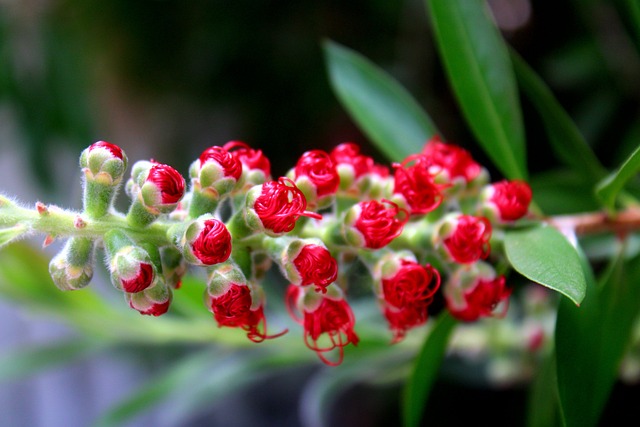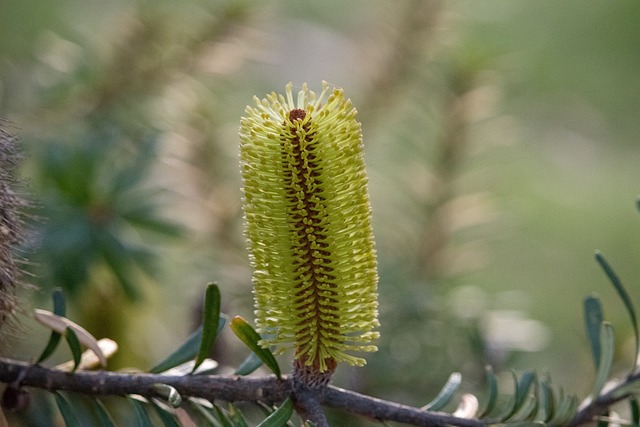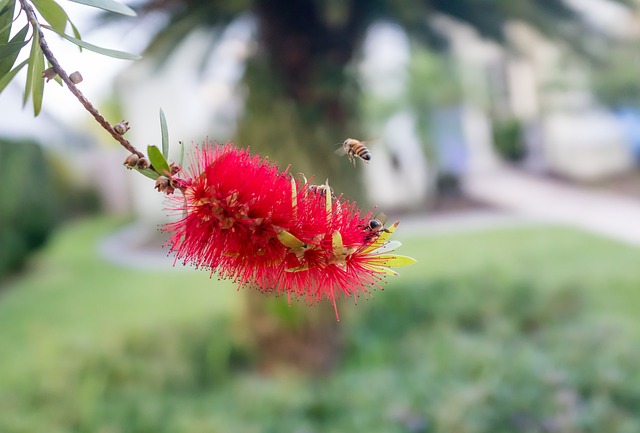There could be various reasons for your bottle brush plant dying, such as insufficient water, poor soil drainage, pests or diseases, extreme temperatures, or inadequate sunlight.
Are you puzzled and disheartened by the sudden death of your beloved bottle brush plant? It’s natural, but there are preventive measures to reduce the death rate of bottle brush plants.
Before taking any preventive measures, let us inform you, you’ve to figure out “Why has your bottle brush died?”
Bottle brush plants, with their vibrant red flowers and unique brush-like blooms, give a precious ornamental value and ability to attract pollinators. However, they can be temperamental and have specific care requirements that, if neglected, can lead to their demise.
No wonder, you’ll know why bottle brushes die and helpful tips to prevent them from our article below.
Why Has Your Bottle Brush Died?
If you wonder about the sudden death of your bottle brush, it’s essential to understand the possible reasons behind its untimely demise.
From inadequate watering and improper soil conditions to pest infestations and environmental factors, several potential culprits exist to consider.
So, why has your bottle brush died? The fact might be hidden, but you can figure it out from the probable reasons for bottle brush death.
Inadequate Watering
Insufficient or irregular watering can lead to dehydration and stress, causing the plant’s health to decline.
Poor Soil Conditions
Unsuitable soil drainage, pH levels, or nutrient deficiencies can hinder the plant’s growth and vitality.
Pest Infestation
Attack by pests like aphids, scale insects, or spider mites can weaken the plant’s defenses and eventually cause its demise.
Disease
Fungal or bacterial infections can spread and damage the plant’s tissues, leading to wilting, discoloration, and eventual death.
Extreme Temperatures
Exposure to frost, freezing temperatures, or excessive heat without proper protection can harm the plant’s sensitive structure.
Lack of Sunlight
Insufficient sunlight, below the recommended 6-8 hours of direct sunlight per day, can weaken the plant and hinder its growth.
Transplant Shock
Poor handling during transplanting or inadequate acclimatization to a new environment can stress the plant and lead to its death.
Root Issues
Unhealthy or damaged roots can cause the death of bottle brushes. Furthermore, poor drainage, root rot, or physical damage also can impede the plant’s ability to absorb nutrients and water.
Environmental Changes
Sudden shifts in humidity, location, or exposure to drafts can shock the plant and compromise its overall health.

Treatment and Strategies to Prevent the Bottle Brush Death
If your bottle brush plant has died, there could be several reasons for its decline. Here are some troubleshooting steps to help you identify the potential issues and revive your plant:
Check Watering Habits:
- Overwatering or underwatering causes the plant dehydrated that leads to their death. Check the soil’s moisture level of your plant diving your finer into the soil
- If the soil feels dry, it’s time to watering your plant.
- Ensure proper drainage to prevent waterlogging and root rot.
Light Conditions:
- Bottle brush plants prefer full sun to partial shade. Inadequate light can lead to poor growth and even death.
- Ensure your plant is receiving the right amount of sunlight for its needs.
Soil Quality:
- Bottle brush plants thrive in well-draining soil that is rich in organic matter.
- Poor soil quality can hinder root development and overall plant health.
Temperature and Humidity:
- Bottle brush plants are generally adapted to warm and humid conditions.
- Extreme temperature fluctuations or dehydrated air can stress the plant.
Pest and Disease Management:
- Inspect the plant with the sign of different plant-based pests (such as aphids, scale insects, or spider mites) or diseases (like fungal infections).
- If pests or diseases are present, treat them promptly with appropriate remedies.
Pruning and Trimming:
- Regular pruning helps promote healthy growth and can prevent disease.
- Remove dead or diseased branches of plants to encourage new growth.
Fertilization:
- Over-fertilization or using the wrong type of fertilizer can harm the plant.
- Follow a balanced fertilization schedule to provide necessary nutrients.
Transplant Stress:
- Transplanting can stress a plant, leading to wilting or death.
- If recently transplanted, ensure you give your plant adequate care during and after the process.
Root Health:
- Check the root system for signs of rot or damage.
- Healthy roots are essential for the plant’s overall well-being.
Invasive Plants:
- Invasive plants can compete for resources and cause stress to nearby plants.
- Ensure no invasive species are encroaching on your bottle brush plant.
Chemical Exposure:
- Chemicals, pollutants, or toxins in the environment can harm plants.
- Ensure your plant is not exposed to harmful substances.
Cultural Care:
- Ensure you are providing appropriate care based on the specific needs of your bottle brush plant species.
Consult a Professional:
- If you’ve exhausted troubleshooting steps and your plant still isn’t recovering, consider seeking advice from a local nursery or horticulturist.

FAQs
How often should I water my bottle brush plant?
Bottle brush plants prefer consistently moist soil but not water-logged conditions. Rinse your plant regularly, or atleast once or twice a week, considering the climate and soil.
What type of soil does a bottle brush plant require?
Bottle brush plants thrive in well-draining soil with a slightly acidic to neutral pH. Avoid heavy clay from the brush plants soils that retain too much water.
Are there common pests that affect bottle brush plants?
Yes, Aphids, scale insects, and spider mites are common pests that can infest bottle brush plants. Regularly inspect your plant and ensure there are no signs of pests attack. Take appropriate measures if you find any.
What are the signs of disease in bottle brush plants?
Wilting, yellowing, or browning leaves and unusual spots or growths on the foliage can indicate diseases like fungal infections. Proper ventilation and avoiding overhead watering can help prevent such issues.
Can extreme temperatures harm my bottle brush plant?
Yes, bottle brush plants are sensitive to extreme cold or heat. Frost or prolonged exposure to freezing temperatures can damage or kill the plant. Similarly, intense heat without adequate moisture can stress the plant.
How much sunlight does a bottle brush plant need?
Bottle brush plants require full sun to thrive. They need at least 6-8 hours of direct sunlight daily.
Did you use fertilizer for your bottle brush plant?
Proper fertilization can impact a plant’s health. Bottle brush plants benefit from a balanced, slow-release fertilizer applied during the growing season.
Have you recently transplanted your bottle brush plant?
Transplant shock can lead to stress and a decline in the plant’s health. Make sure you follow proper transplanting procedures and provide extra care during the adjustment period.
Could there be root issues affecting your plant?
Unhealthy or damaged roots can affect a plant’s ability to absorb water and nutrients. Ensure proper drainage and avoid root disturbances.
Have you noticed any changes in environmental conditions?
Sudden changes in location, humidity, or exposure to drafts can impact the plant’s health. Maintain a stable environment for consistent growth.
Conclusion
Remember, diagnosing and treating plant issues can sometimes be complex. And it may take time for your plant to recover even after addressing the problem.
By identifying the underlying cause, you can prevent future plant casualties and ensure your bottle brush plant’s longevity and blooming success.
Nevertheless, to treat the bottlebrush properly, you must figure out, “Why has your bottle brush died?” Insufficient care, improper watering, soil issues, pests, or adverse weather conditions can be the reason for your bottle brush dying.

